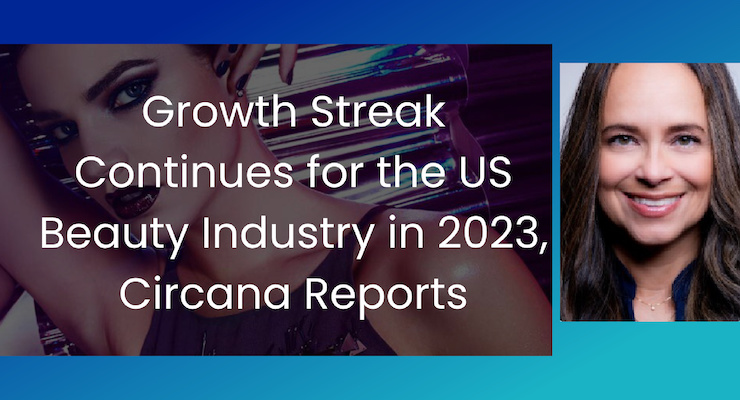The U.S. beauty industry has defied expectations time and again, and after two spectacular years of growth, it’s showing no signs of a slowdown. Logic would suggest that a slowdown is inevitable, but consumers have proven their resilience when it comes to beauty product spending, even as they pull back on other purchases.
Both prestige and mass market beauty were two of the top five fastest growing areas across all of retail, based on dollar sales and inclusive of all general merchandise and CPG industries tracked by Circana. Looking at unit sales performance, prestige beauty is the standout, as the only tracked industry to grow in units sold–for two years in a row.
Here are what I’ve identified as the top lessons we can learn from the prestige beauty market, to better understand the future of our complete industry, across the mass and prestige businesses, as we step into 2024.
Luxury is still a thing–but it’s changing.
In 2021 and 2022, consumers were indulging in high-end luxury artisanal fragrances, but in 2023 that narrative changed. Luxury sales experienced a slowdown in fragrance, which is the most expensive of the prestige beauty categories.The areas driving growth for fragrance in 2023 were notably different and carried lower price points. Gift sets, smaller sizes, and body sprays showed the strongest growth, indicative of a consumer seeking value.
Alternatively, luxury spending picked up in categories such as makeup, which coincidently carries the lowest average price in beauty.
Designer makeup brands are profitable.
Designer makeup brands, which are priced about 75% higher than the rest of the category, have been growing at a faster rate than total makeup. But once again, the consumer shift to value is noticeable.Products driving growth in the luxury makeup sector include lip oils, lip glosses, and blushes. With makeup having the lowest average price in the prestige market, it’s not surprising that most of the product drivers in luxury fall into the less expensive yet fun segments like lip products.
Inflationary pricing across all of retail has squeezed consumer spending.
But when consumer spending power is squeezed, they will make choices that reflect what is important to them. We see this in the beauty results when comparing mass to prestige, and with the prestige business growing faster.But also, within prestige, luxury brands are performing better than the rest of the market in certain, lower priced, segments. In other words, luxury is being redefined to be less about price, and more about the want rather than the need. My call to action for brands and retailers is to meet that “want.”
The consumer has a new mindset, which in turn requires a new approach from the beauty industry.
Mass brands shouldn’t bank on the trade down happening within other retail and CPG industries, as prestige beauty continues to grow in the face of inflationary pressures and economic uncertainty.On the other hand, prestige brands should not rest on their laurels. Flexibility, creative thinking, and effectively harnessing high consumer engagement are all part of the winning formula to drive continued growth for years to come.
ABOUT THE AUTHOR
Larissa Jensen is Senior Vice President, Global Beauty Industry Advisor at Circana. She is a member of Beauty Packaging’s Board of Advisors, and a frequent contributor.
Photos: via LinkedIn/LarissaJensen and CircanaRead Next: Watch our video interview with Jensen.













